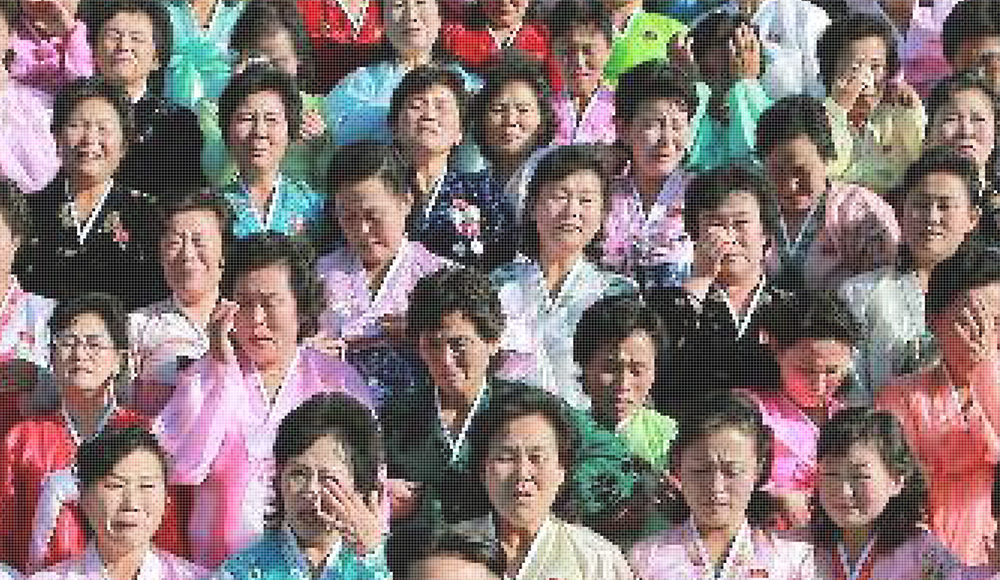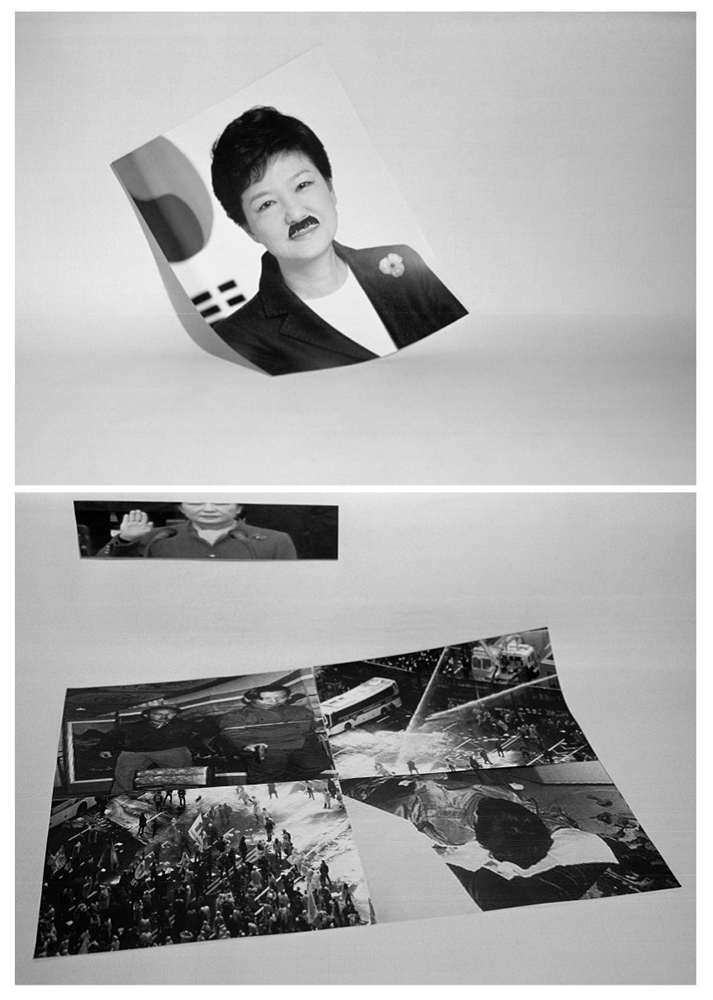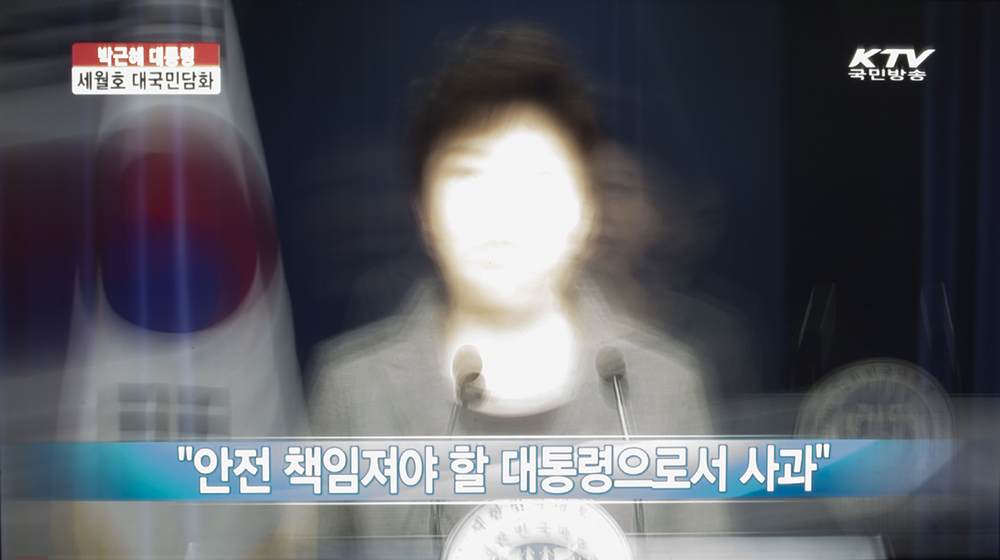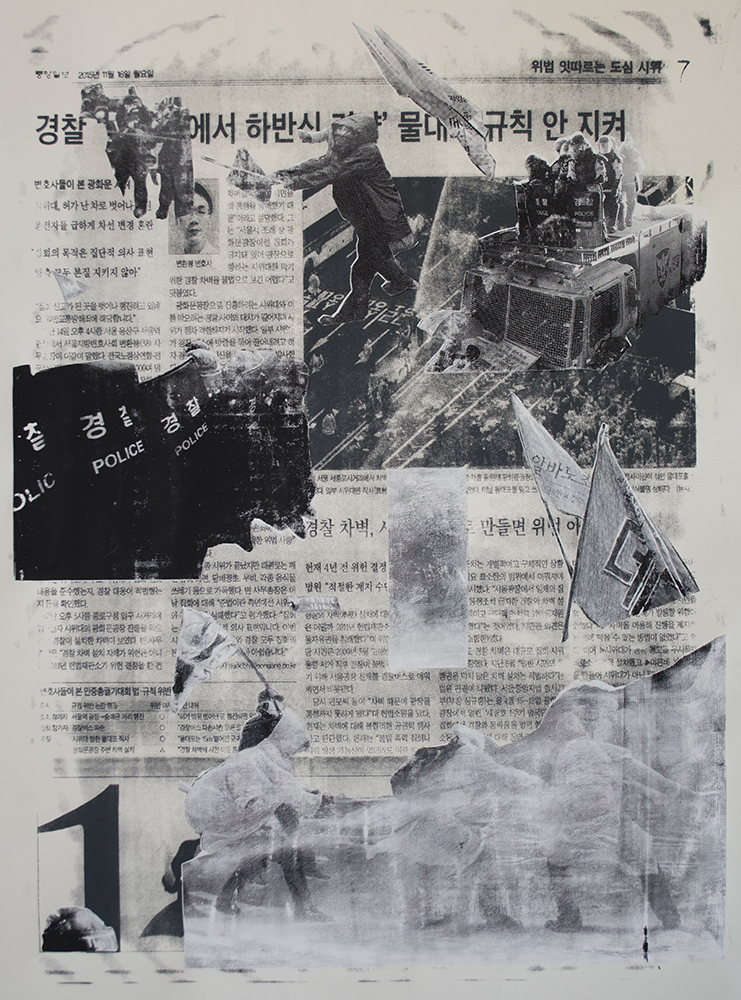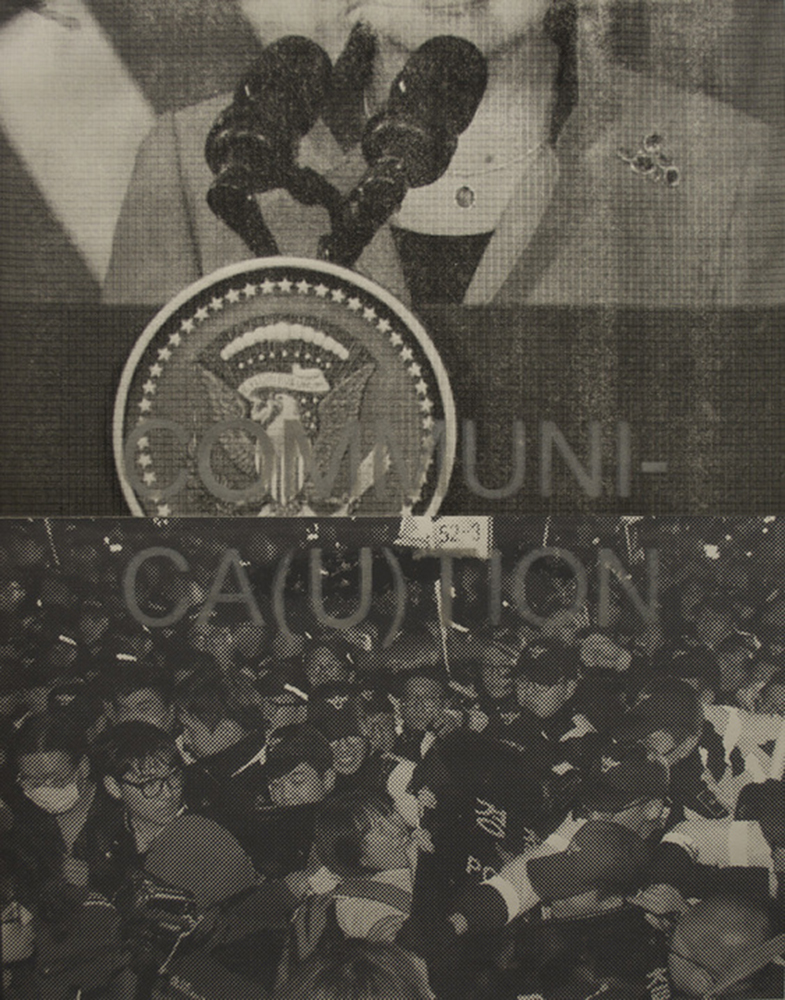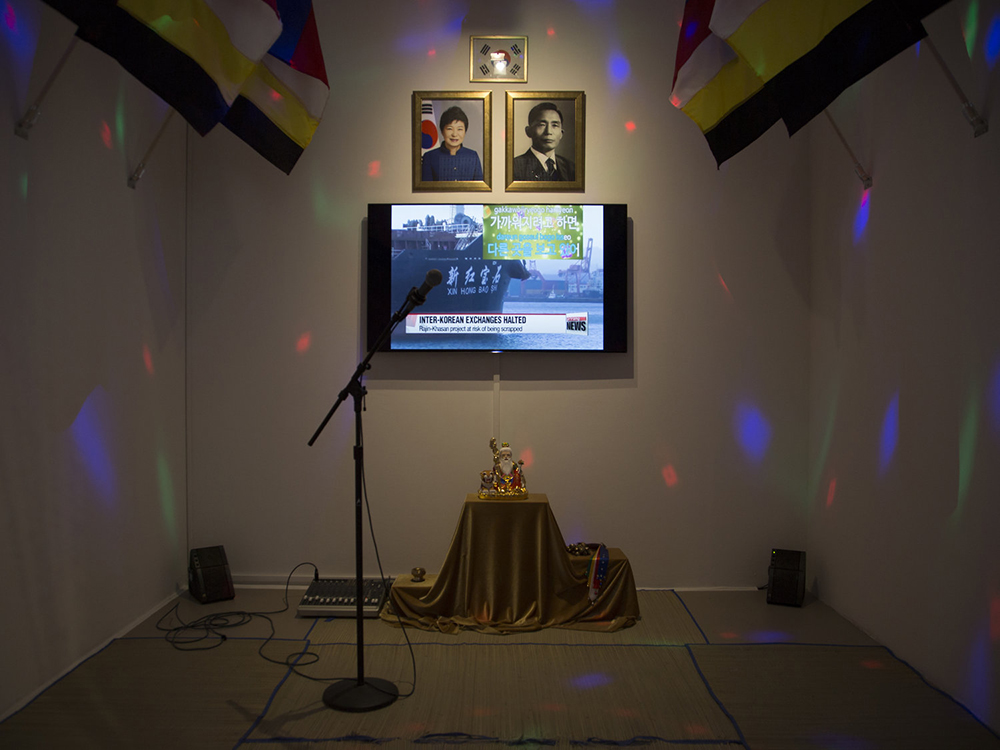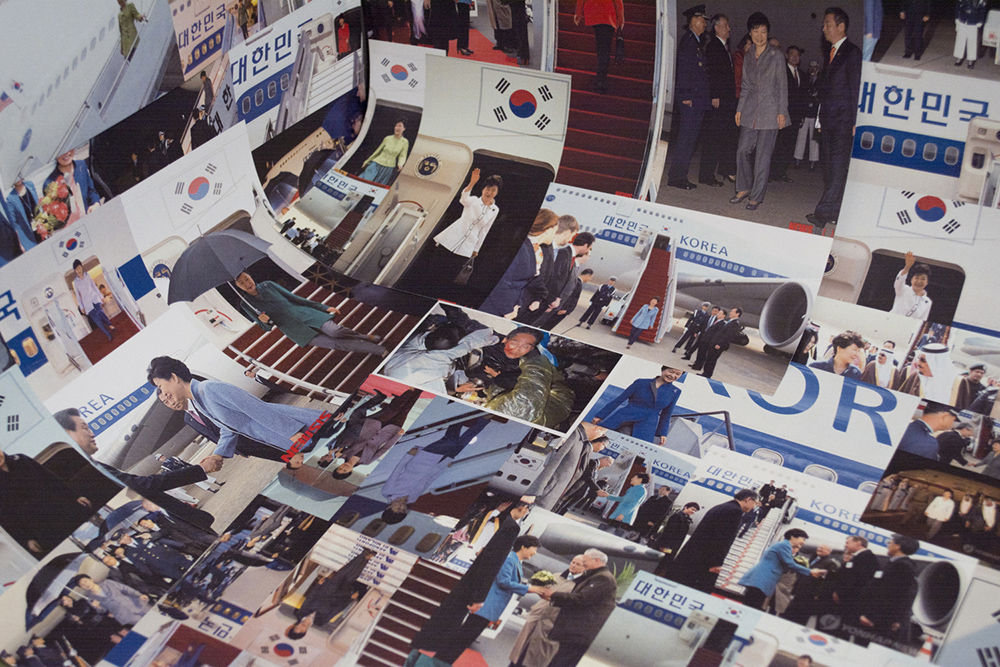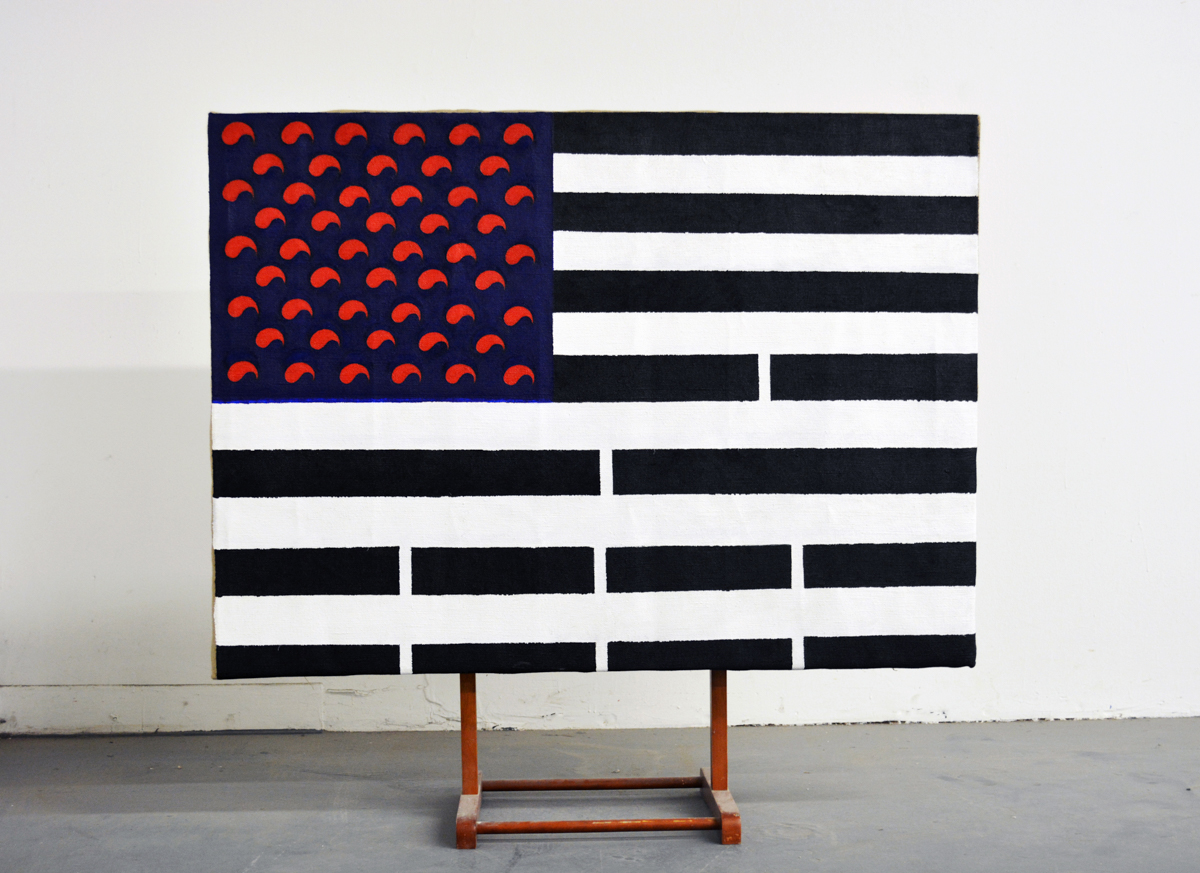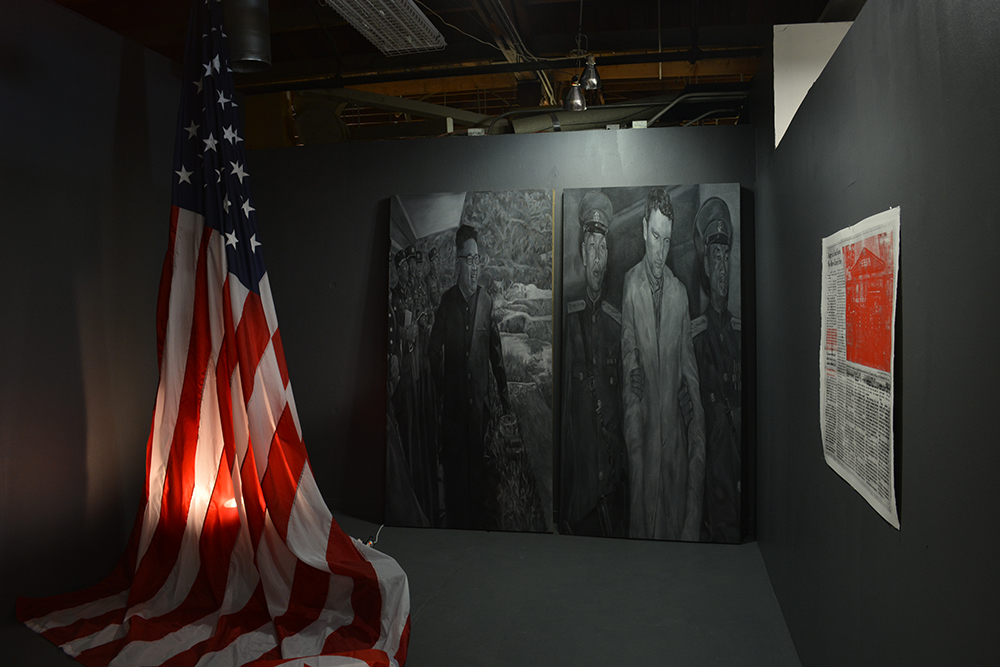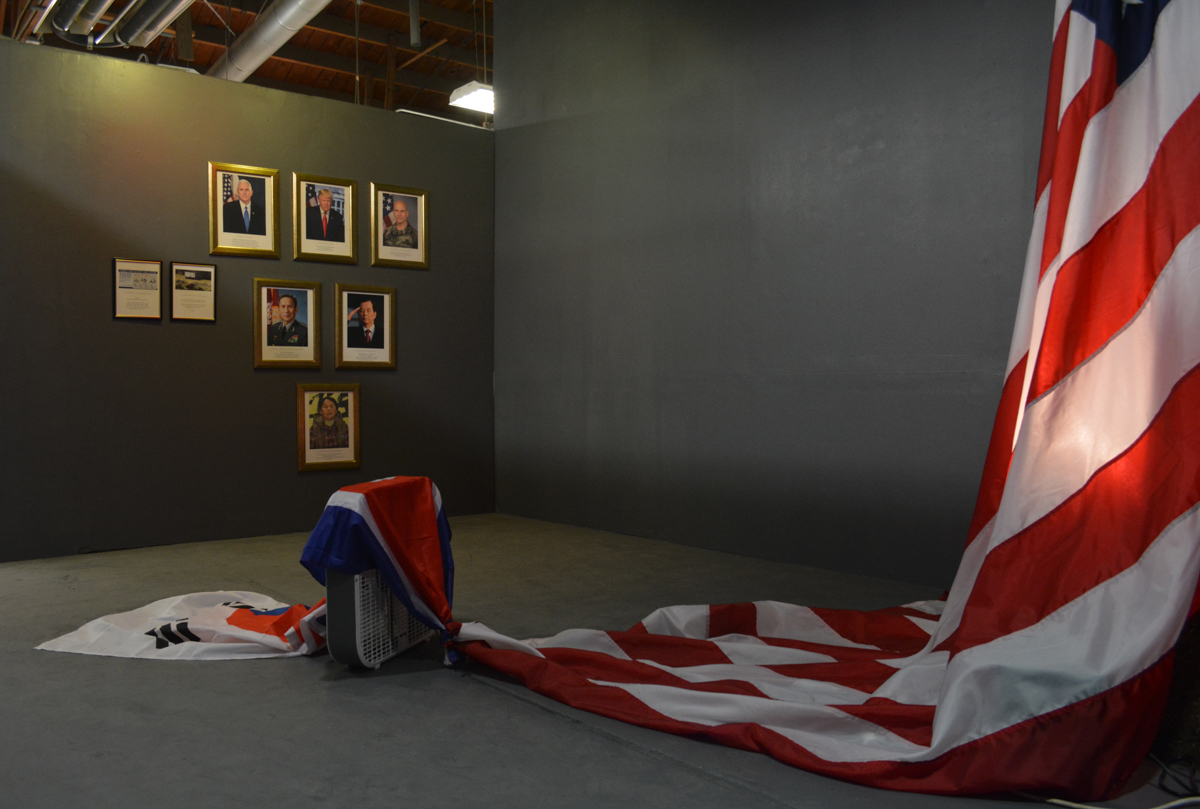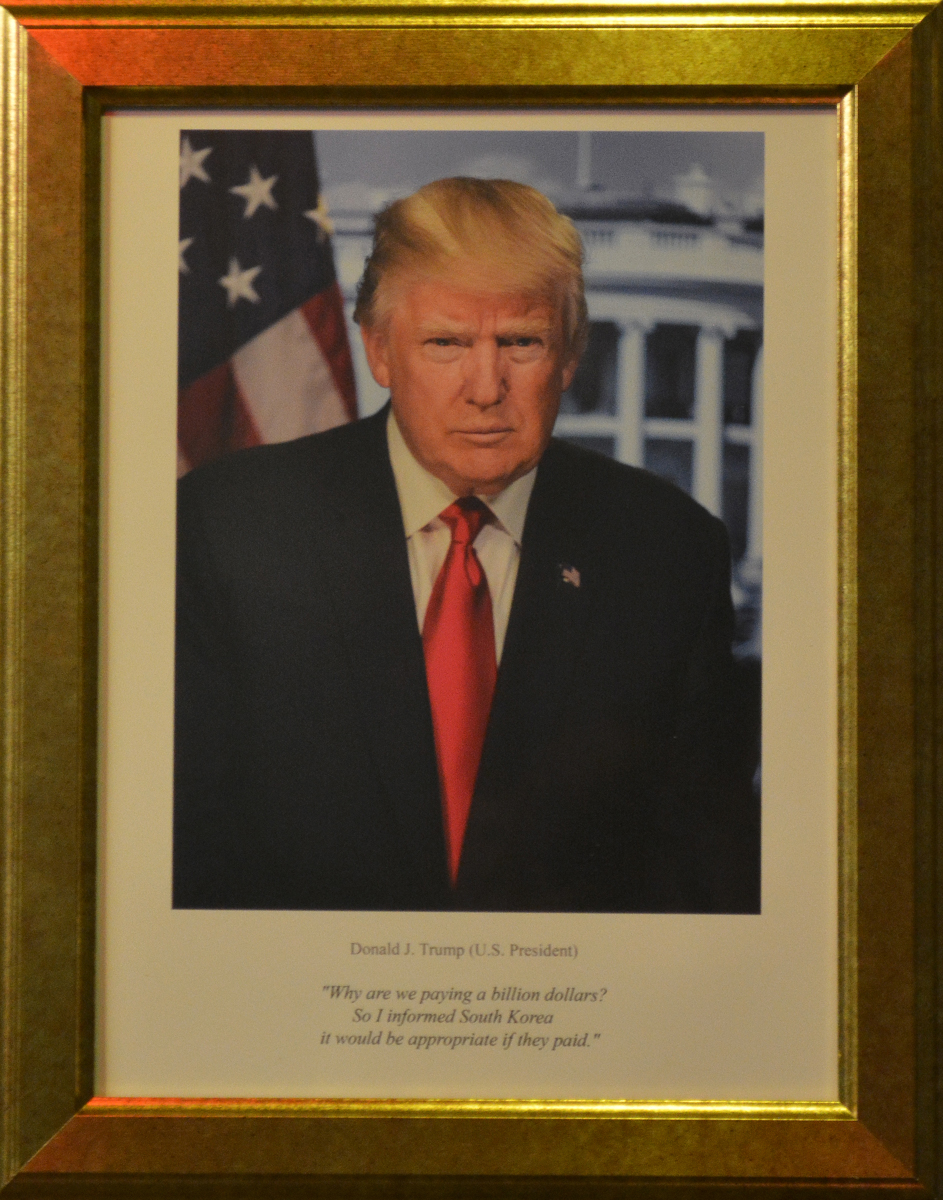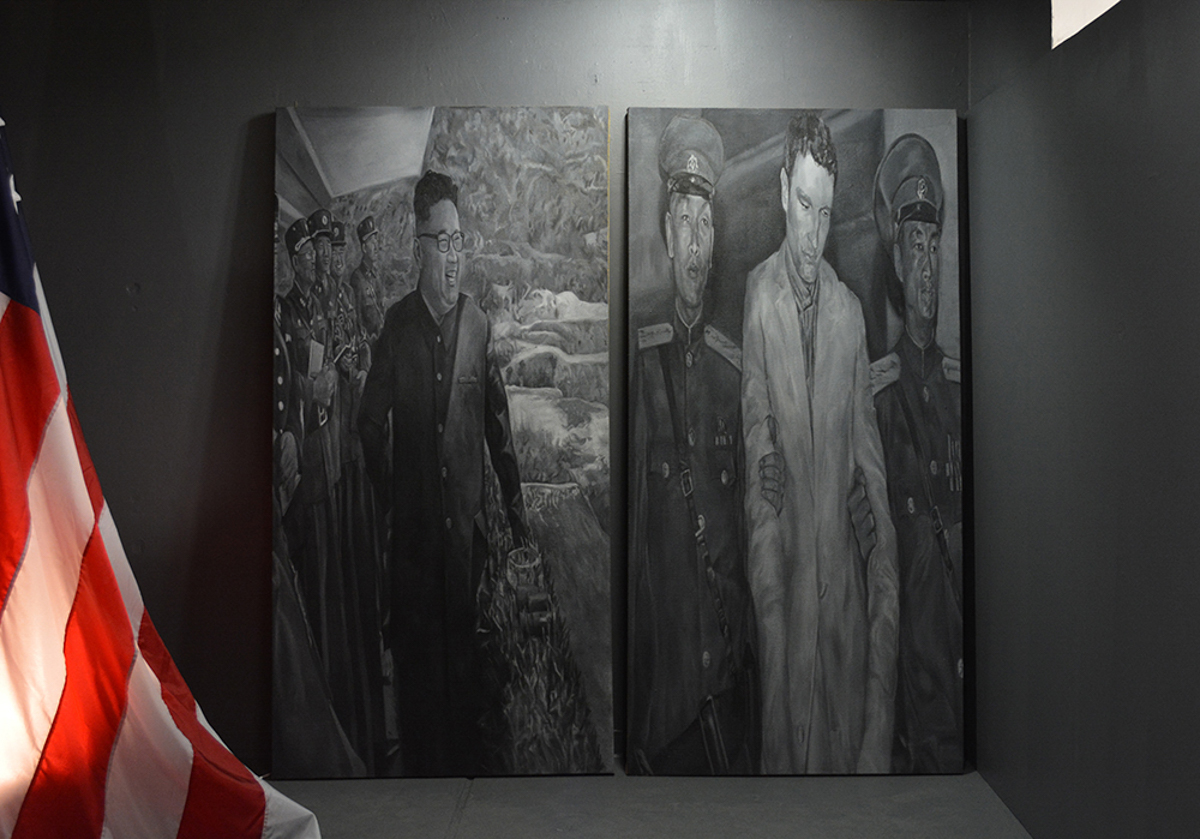Jae Hwan Lim: Koreamerica
Today, we share an interview with Jae Hwan Lim who is much active and vocal in his politically fueled, activist-artist practice. Lim’s bodies of work, much driven by his cultural origin and perspectives as a spectator as well as a mediator, examine and critique the past and current political repression and tension that constantly remain in his divided home country: North and South Korea. Through various modes of representations and manipulations, Lim strives to expose sociopolitical incidents and misconceptions, as well as to bring an immediate attention to societal confinement on human rights violations and inequalities.
I first met Lim through a very close colleague of mine and was much inspired by his animated yet desperate need to outspread and share his cultural roots and knowledge, that are often lost in time and history. Bridging the gap between two distinct cultures has always hindered the process in my current practice in finding a balanced, appropriate voice, and sharing this endless constraint with someone who carries a similar intention was immensely hopeful and encouraging to embrace the role of a mediator and continue to be more vocal.
Jae Hwan Lim is a politically driven artist-activist focusing on human rights and the struggles for democracy in South and North Korea. Examining violence in society and politics through his installations, performances, and social practice projects, Lim is currently a Master of Fine Arts degree candidate in Interdisciplinary Studio at the University of California, Los Angeles (UCLA).
He is the founder and director of Humans in North Korea (HNK), an organization that advocates for North Korean defectors in the United States and for global citizenship. He has served as a Delegate of the Northwestern University Conference for Human Rights and was an Art-Uni-On artist, a fellowship sponsored by Hyundai Motors and Seoul National University. He has exhibited in a Forum for an NGO, Global Network for Rights and Development in Stavanger, Norway; Total Museum of Contemporary Art in Seoul, South Korea; University of Chicago East Asian Studies in Chicago, IL; UCLA Kerckhoff Art Gallery, Los Angeles, CA; and University of Helsinki, Finland.
Through re-presentation of narratives and visual elements from the media, my interdisciplinary artistic practice criticizes political repression happening within and towards South and North Korea. My large-scale installations, performances, and social practices comment on current issues that oppress public’s freedom such as bureaucracy, police brutality, media censorship, and imperialism.
Embracing historical and recent events that resonate with the current political situation in the Korean Peninsula, I reproduce media images by collecting, collaging, and manipulating them to suggest the repetition of history and passage of time. I develop multiple perspectives on a sociopolitical situation by appropriating and reenacting the actions of politicians, police officers, and activists who are or were considered controversial figures by the news media. Utilizing academic and institutional resources, I plan and conduct research projects on topics such as the oppression of public’s expression and autonomy.
As an artist-activist, I continue to reveal sociopolitical events in Korea and bring the viewer’s awareness to human rights violations and social inequalities in society at large.
Who is Jae Hwan Lim?
I was born and raised in Ansan, South Korea. Ansan is known for its industrial businesses and Southeast Asian immigrants and workers. There is also a high economical gap between rich and poor within the city. I was raised by my father, a middle-class company employee who devoted his 27 years in one company in the industrial complex, and my mother who worked as a public elementary school teacher. In my youth, I saw both of my parents working late nights, coming home after late dinner and drinks with their coworkers, and my father working during the weekends. Since both of my parents could not spend much time together due to South Korea’s outcome-driven working environment and social structure, I was wondering about the role of politics and politicians in the lives of the citizens.
In middle school, I started reading Korean newspapers, one from the liberal and the other from the conservative perspective. This was when the conservative Lee Myung-bak regime ruled South Korea and many bureaucracy and human rights violations happened during his presidency. Protesting residents of gentrified Yongsan district in Seoul, South Korea died due to the Korean SWAT team’s sudden attack; entertainers were blacklisted and the media was censored by the National Intelligence Service; and President Lee’s Four Major River Project destroyed the ecosystem in Korea’s Han River and revealed his Korean conglomerate-related corruptions as a former Hyundai Construction CEO.
The turning point of my life was the Sewol Ferry incident in 2014 during the presidency of Park Geun-hye, the successor of President Lee. This incident caused the death of over 300 passengers, mostly the high school students from my hometown, Danwon-gu, Ansan. President Park Geun-hye did not respond to the incident for over 7 and a half hours. She instead requested the maritime police to send the live video of the incident and delayed the rescue. It was later found out that the Park administration hired a fake victim to share President Park’s condolence through media reports and the victim families were attacked by the police water cannon and pepper sprays when marching towards the Blue House.
This incident happened when I was a student in Chicago. Knowing that the victims are from the same hometown as me and that they are the victims of the governmental bureaucracy made me question my responsibility and duty as an artist, human being, and engaged citizen. Park administration has caused and was related to many human rights violation issues, such as the election rigging, police brutality, governmental corruption scandal, and artist blacklist. These incidents led to the one million Korean citizens’ request to oust President Park Geun-hye and the constitutional court’s decision to impeach her. Having lived in such sociopolitical situations, I embrace the history and the recent state of Korea to create artwork.
What is your definition of Art & Politics and how do you define yourself as an artist-activist?
I was recently concerned about defining myself as either an artist or an activist. However, now I think I can become one or the other, both, any level in the middle of those two binaries, or separate them as different practices. It is a matter of how much of an artist and activist I would like to identify myself. People who ask how I can be defined as an artist and have a hard time understanding my artworks generally perceive that there is no relationship between art and politics. However, it is easier to understand the blurriness between art and politics if you widen the classification.
Art functions as a mobilizer of the audience’s understanding towards the world and politics is a process of making decision to foster changes. People have been making changes to governmental policies and the public’s political awareness. People continue to do so to gain, protect, and develop their rights. Art and artist have a power to share feeling, situation, experience, history, and among other categories with the audiences. Using political situations that hugely influence the public’s lives in an art context, I share the need to acknowledge certain issues. I strongly believe in the art’s functionality to allow the audience’s access to understand the politics from different perspectives.
How do you perceive and define yourself as a bi-cultural artist?
I first perceived my bi-culturalism when I encountered the issues of South Korea through on- and offline Korean and non-Korean news media while living in the United States. The first year I studied in Chicago was when Korean pop culture, such as music and soap operas, received global attention. However, it was also the first year of Park Geun-hye’s presidency and most of the South Korean human rights issues were not acknowledged by the Western media and non-Korean populations. In this situation, I found myself isolated in a foreign country and felt the irony of people’s dominant interest in the cultural phenomena over the political issues that affected the public’s human rights.
I do not and cannot force people to think in a certain way about politics. But, my bi-culturalism has the power of connecting the issues of Korea with the situations in other countries. It allows people to find common political aspects in the world, creating open dialogues about the issues.
When you are describing your initial approach to work, you mentioned you are often in the mode of journalism or documentation. Is it an objective or subjective point of view?
I doubt about the possibility of being objective. I think that even journalism and news media is hard to be “objective.” Human beings observe the world based on their knowledge, experience, background, emotion, and many other elements that influence their lives. Most of the time, journalists have specific agendas of their own or the news media they are working for has a prejudiced political stance. Even the news media that insist to be neutral would present their articles and reports with the writer’s biased opinion.
Having said this, I appropriate the actions of journalism and documentation through news media to create my artwork. I tend to write on my notepad during my conversations with others. It allows me to collect information that I may forget and may be important in the future for the development of my project. I select the subject matter of new project by researching news sources based on my criteria and interests. After picking and choosing the contents, I further examine the selected incident by reading related news from other media, writing my thoughts on the event, finding relative books and special collections, watching online videos, and going to lectures. Although such process might seem relatively objective compared to other types of artworks, it is all enacted with my subjectivity.
What compels or provokes you to create politically charged bodies of work and what are your intentions behind it?
Korean Peninsula has been a globally politically-charged region since the Korean War. The tension between the United States and the Soviet Union has transited to South and North Korea. The polarized politics, numerous civilians’ scarifications, radical economic development, and continuing corruption repeated in the process of South Korea’s democratization. The conflicts between South and North Korea remains and the United States and China’s political influence on the two Koreas disregards the possibilities of the Korean reunification.
I think about the ways to let people consider the current and future political situation of the two Koreas. I find every individual audience as performer of my art. Getting inspired by the content of my artwork, the audience may spread their new knowledge about the political situation in Korea with others and may try to further study the issue. Encountering information about the political states of the two Koreas and the diplomatic relationships with other countries, the audience may resonate the situation with their countries’ sociopolitical situation.

©Jae Hwan Lim, Humans in North Korea symposium “Beyond Missiles”, Image courtesy of The Korea Times, 2017
What would you say the difference is between the perception of your work here in the United States and back at home in Korea?
The location of where I present the work differentiates the level of the audience’s perception of my art practice. While there are artists and activists based in Korea acting against the domestic situations that impact their lives, my position in the United States is like an independent emissary who shares the issues of Korea with Koreans and non-Koreans living abroad. Many of these people get informed about Korea and they also find commonalities between Korea and their countries through similar sociopolitical issues presented in my practice, such as the police brutality, media censorship, and bureaucracy.
Audiences in Korea and who are non-Korean but are aware of the situation in Korea insist that the content of my work is explicitly comprehensible through recognizable images and they don’t see much of the differences between journalism and art in my practice. On many occasions, I am challenged to choose how much information to reveal and provide for a wide range of audiences in Korea and the U.S.
Much of your work provides the audience a platform for intervention and intercultural communication, how do you go about constructing the bridge source?
The medium, image, scale, color, height and the path within the installation space varies the audience’s experience and understanding of my art. In my social practice project Humans in North Korea (2016-ongoing) I create educational platforms, such as symposia, lecture series, film screenings, and exhibitions, to share diverse perspectives towards the issues of North Korea and the possibilities of Korean reunification. I invite Korea scholars and experts and the audience can learn new information that the news media barely deals with and the public is rarely aware of. Utilizing books, magazines, and special objects in libraries related to North Korea, I curate exhibitions in library display cases to inform North Korea’s politics, cultures, and human rights, and the differences and similarities of the two Koreas.
By presenting such platforms in English, I allow the Korean and non-Korean people living abroad and English speakers living in Korea to learn about the complexity of the situation in the two Koreas. But, these works can be re-presented in Korean and in any other languages to approach different audiences in other venues and countries.
Is there a cultural knowledge gap when conveying a specific message to your target audience? And how do you consider that into an account?
I think an artist should consider how their artwork is being interacted by the audiences. However, the artist’s agenda or intention should not be taken out from the artwork due to the consideration of the possible audience’s cultural and knowledge gap with what the artist wants to present. If the artist does so, such decision will take away the audience’s experience to be informed and educated about the art’s subject matter.
I get inspired by non-Korean artists who deal with their country’s sociopolitical issues. Through this process, I learn about the global situations and I find similarities with the historical and recent issues of South and North Korea. As many of my art has more potentiality when it communicates with the audience, I attempt to consider the audience’s possible responses to my artwork. However, I also expect the audience to be ready to learn, accept or deny, and process the content of my art.
Welcome to Koreamerica! (2017)
Lim’s Welcome to Koreamerica! is about the United States’ alliance relationship with South Korea. South Korea’s military relationship with the United States has continued since the end of the Korean War under the Mutual Defense Treaty Between the United States and the Republic of Korea (ROK). Despite the significance of the United States’ alliance relationship with South Korea, to be protected from North Korea’s potential military measures, there has been U.S.’ military coercions towards South Korea. In Welcome to Koreamerica!, I highlight the issue of U.S. missile defense system called Terminal High Altitude Area Defense (THAAD) that was deployed in South Korea in March 2017. The hierarchical relationship between the American and South Korean military, U.S.’ usage of North Korea issues to proliferate weapons sales to South Korea, and the U.S.’ inconsideration of South Korean citizens and its diplomacy with China is discussed through the installation. Thinking of the tension in the Korean Peninsula created with North Korea’s continuous provocation and the United States’ military power over South Korea, I provide a platform for the audience to consider such issues that affect the lives of the North and South Korean citizens.
Where do you see “Welcome to Koreamerica!” going?
It is my first time making and presenting pieces about Korea’s relationship with the United States. Welcome to Koreamerica! let me learn a different strategy to involve the audiences who may not know and not be interested in the political issues related to Korea. I am debating if I will be using this theme again as my art subject matter in the future project. Since my practice is politically-charged and I get inspired by the current political situations and phenomena, I tend to be cautious with the agendas and actions I make as an artist-activist. My decision of developing and continuing Welcome to Koreamerica! or a project about the United States’ military influence on South Korea will vary by the changes in the multilateral relationship between South Korea, North Korea, the United States, China, and other countries.
Posts on Lenscratch may not be reproduced without the permission of the Lenscratch staff and the photographer.
Recommended
-
Salua Ares: Absense as FormNovember 29th, 2025
-
Ricardo Miguel Hernández: When the memory turns to dust and Beyond PainNovember 28th, 2025
-
Pamela Landau Connolly: Columbus DriveNovember 26th, 2025
-
KELIY ANDERSON-STALEY: Wilderness No longer at the Edge of ThingsNovember 19th, 2025
-
Jackie Mulder: Thought TrailsNovember 18th, 2025

